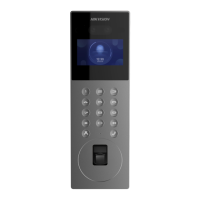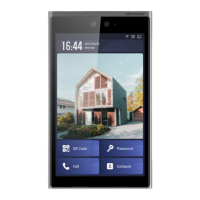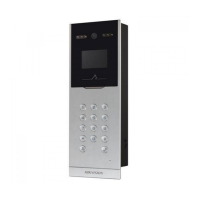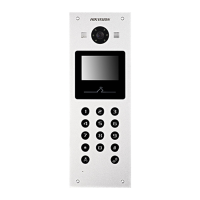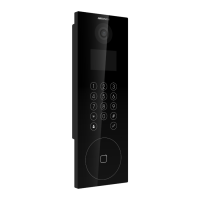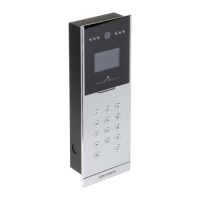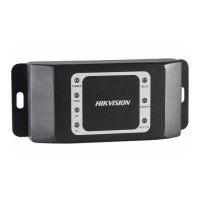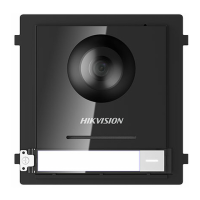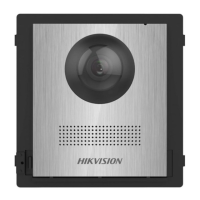Do you have a question about the HIKVISION DS-KD9203 Series and is the answer not in the manual?
| Category | Intercom System |
|---|---|
| Resolution | 1024 x 600 |
| Camera | 2MP |
| Audio Input | Built-in microphone |
| Audio Output | Built-in speaker |
| IP Protection Level | IP65 |
| Material | Aluminum alloy |
| Model | DS-KD9203 |
| Display | 7-inch |
| Audio Quality | Full duplex |
| Ethernet | 10/100 Mbps |
| Network Protocol | TCP/IP, RTSP |
| Input Interface | 1 channel alarm input |
| Power Supply | 12V DC |
| Operating Humidity | 10% to 90% (no condensation) |
| Installation | Surface mounting |
| Video Input | 1 channel |
| Video Output | 1 channel |
| Resolution (Video) | 1920 x 1080 |
| Network Interface | RJ45 |
| Function | Video intercom, access control |
General information about the document's content, purpose, and disclaimers.
Information regarding after-sales service support for the product.
Details Hikvision's ownership of copyrights and trademarks related to the product.
Disclaimer on product use, warranties, and liability.
Indicates a hazardous situation that could result in death or serious injury.
Indicates a potentially hazardous situation that could result in equipment damage or unexpected results.
Provides additional information to emphasize or supplement important points.
Critical warnings for electrical, power, installation, and device handling.
Advice on physical handling, environment, and cleaning.
Statement on product compliance with EU directives and standards.
Compliance for Industry Canada standards, including radio regulations.
Info on accessing manual and software from the official website.
Illustration/labeling of external components for the door station without a fingerprint.
Illustration/labeling of external components for the door station with a fingerprint.
Details device terminals and their connectivity functions.
Instructions and diagrams for connecting the door station.
Specific wiring for connecting the door lock mechanism.
Instructions for wiring the exit button for egress control.
Instructions for wiring the door contact sensor for door status monitoring.
Dimensions and specs for the gang box used for mounting.
Step-by-step guide for flush mounting the door station using a gang box.
Instructions for activating the device directly and setting a password.
Steps to activate the door station using the iVMS-4200 client software.
Procedures for activating the device through its web interface.
Overview of configuring device settings directly on the door station.
Guide to modifying network settings like IP address and gateway on the device.
Instructions for configuring local parameters and recognition settings.
Configuration options for community, building, floor, room numbers, and device mode.
Settings for detecting and recognizing individuals wearing masks.
Procedures for managing user info, adding, editing, and deleting residents.
Steps for adding users, including card info, permissions, and room numbers.
Info on device model, system version, and QR code.
How to use video intercom features, including calling residents.
Steps for initiating calls to residents from different door station types.
How to call the central management or call center.
Methods for unlocking the door using password, card, or fingerprint.
Instructions for unlocking the door using a personal or public password.
How to unlock the door by presenting an authorized card.
Steps to unlock the door using fingerprint recognition.
How to unlock the door by presenting your face to the camera.
Accessing and viewing live video feed from the door station via web browser.
Managing user accounts, adding, editing, and deleting via web interface.
Managing connected devices: adding, exporting, and upgrading firmware.
Configuring various device parameters through the web interface.
Modifying network settings for the device using iVMS-4200 client software.
Adding the door station device to the client software for remote management.
Organizing devices and users into hierarchical structures within the client software.
Managing individual user profiles: adding, editing, and issuing cards.
Configuring video intercom features, including call logs and notices.
Guidelines for taking and comparing face pictures for recognition accuracy.
Requirements and recommendations for importing face pictures into the system.
